Lecture
There are several concepts related to the acquisition of human life experience in the form of knowledge, skills, abilities . This is - learning, teaching, learning .
The most common concept is learning. Intuitively, each of us represents what learning is. They say about learning in the case when a person began to know and (or) be able to do what he did not know and (or) did not know how before. These new knowledge and skills may be the result of activities aimed at their acquisition, or act as a side effect of behavior that implements goals that are not related to this knowledge and skills.
Learning refers to the process and result of the acquisition of individual experience by a biological system (from the simplest to man as the highest form of its organization in the conditions of the Earth) . Such familiar and common notions as evolution, development, survival, adaptation, selection, improvement, have some commonality, which is most fully expressed in the concept of learning, which resides in them either explicitly or by default. The concept of development, or evolution, is impossible without the assumption that all these processes occur as a result of changes in the behavior of living beings. And now the only scientific concept that fully covers these changes is the concept of learning. Living beings learn new behaviors that provide more efficient survival. All that exists, adapts, survives, acquires new properties, and this happens according to the laws of learning. So, survival mainly depends on the ability to learn.
In foreign psychology, the concept of "learning" is often used as the equivalent of "teaching". In domestic psychology (at least during the Soviet period of its development) it is customary to use it in relation to animals. However, recently a number of scientists (IA Zimnyaya, VN Druzhinin, Yu.M. Orlov, and others) use this term as applied to man.
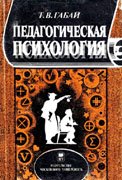 For a better understanding of the differences between learning, teaching and learning, we use the classification of activities as a result of which a person gains experience (Gabay TV, 1995; annotation). All activities in which a person gains experience can be divided into two large groups: activities in which the cognitive effect is a side (additional) product and activities in which the cognitive effect is its direct product (see Fig. 1).
For a better understanding of the differences between learning, teaching and learning, we use the classification of activities as a result of which a person gains experience (Gabay TV, 1995; annotation). All activities in which a person gains experience can be divided into two large groups: activities in which the cognitive effect is a side (additional) product and activities in which the cognitive effect is its direct product (see Fig. 1).
Learning includes the acquisition of experience in all activities, regardless of its nature. In addition, the acquisition of experience as a by-product, depending on regularity, may be stable, more or less constant, and also occasional, episodic in certain types of activities.
Acquisition of experience as a stable by-product can occur in the process of spontaneous communication, in the game (if it is not organized by an adult specifically for the purpose of the child assimilating any type of experience).
In all of these activities (play, work, communication, deliberate cognition), experience can also be acquired as an accidental by-product.
The second large group of activities in which a person gains experience consists of such types of them that are consciously or unconsciously carried out for the sake of the experience itself.
We first consider activities in which the acquisition of experience is made without setting an appropriate goal. Among them are the following types: didactic games, spontaneous communication and some other activities. All of them are characterized by the fact that, although the subject of gaining experience does not set himself the goal of mastering this experience, he naturally and consistently receives it at the end of their process. In this case, the cognitive result is the only rational justification of the time and effort of the subject. However, the real motive is shifted to the process of activity: a person communicates with others or plays because he enjoys the process of communication or the game itself.
In addition to the didactic game and spontaneous communication, the acquisition of experience as a direct product, but without a conscious goal is also achieved in free observation, in the course of reading fiction, watching movies, performances, etc.
Discovery or assimilation becomes one of the most significant criteria for the classification of types of knowledge. In turn, learning also involves two options:
The latter option is of the greatest interest to us, since it reflects the essential features of the phenomenon that takes place in any human being and consists in transmitting to the younger generation the experience that society has. This kind of activity is the teaching.
The doctrine is defined as the teaching of a person as a result of purposeful, conscious appropriation of the transmitted (transmitted) his sociocultural (socio-historical) experience and the individual experience formed on this basis. Therefore, the teaching is considered as a kind of learning.
Learning in the most common sense of the term means purposeful, consistent transmission (transmission) of sociocultural (sociohistorical) experience to another person in specially created conditions. In the psychological and pedagogical sense, learning is seen as managing the process of accumulating knowledge, forming cognitive structures, organizing and stimulating a student’s learning and cognitive activity (http://www.pirao.ru/strukt/lab_gr/l-ps-not.html; see Laboratory of psychological foundations of new educational technologies).
In addition, the concept of "learning" and "learning" are equally applicable to humans and animals, in contrast to the concept of "teaching". In foreign psychology, the concept of "learning" is used as the equivalent of "teaching". If “learning” and “teaching” denote the process of acquiring individual experience, then the term “learning” describes both the process itself and its result.
Scientists interpret the considered triad of concepts in different ways. For example, the points of view of A.K. Markova and N.F. Talyzins are as follows (see Fig. 2).
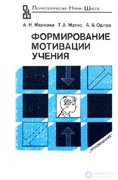
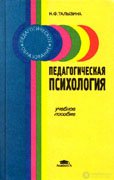 N.F. Talyzina adheres to the interpretation of the concept of "learning" that existed in the Soviet period - the application of the concept in question exclusively to animals; learning is considered by her only as a teacher’s activity in organizing the pedagogical process, and learning is considered as the activity of a student involved in the learning process (Talyzina NF, 1998; abstract) (http://www.psy.msu.ru/about/kaf /pedo.html; see Department of Pedagogy and Pedagogical Psychology, Faculty of Psychology, Moscow State University).
N.F. Talyzina adheres to the interpretation of the concept of "learning" that existed in the Soviet period - the application of the concept in question exclusively to animals; learning is considered by her only as a teacher’s activity in organizing the pedagogical process, and learning is considered as the activity of a student involved in the learning process (Talyzina NF, 1998; abstract) (http://www.psy.msu.ru/about/kaf /pedo.html; see Department of Pedagogy and Pedagogical Psychology, Faculty of Psychology, Moscow State University).
Thus, the psychological concepts of "learning", "learning", "teaching" cover a wide range of phenomena associated with the acquisition of experience, knowledge, skills, abilities in the process of active interaction of a subject with the subject and social world - in behavior, activity, communication.
The acquisition of experience, knowledge and skills occurs throughout the individual’s life, although this process is most intense during the period of attaining maturity. Consequently, the learning processes coincide in time with the development, maturation, mastering the forms of group behavior of the learning object, and in humans - with socialization, mastering cultural norms and values, the formation of personality.
So, learning / learning / teaching is the process by which a subject acquires new ways of carrying out behavior and activities, fixing and / or modifying them . The most common concept denoting a process and the result of acquiring individual experience by a biological system (from the simplest to man as the highest form of its organization in the conditions of the Earth) is “learning”. Man's learning as a result of purposeful, conscious appropriation of the socio-historical experience transferred to him and the individual experience formed on this basis is defined as a teaching.
Learning is the process and result of the acquisition of individual experience. As already emphasized above, in the domestic psychology (at least during the Soviet period of its development), the notion of learning was used to apply to animals. Yu.M. Eagles, attaching great importance to this concept in science, emphasizes that "in psychology there is probably no other concept that is so crucial for understanding a person as learning . Teaching is a concept denoting the process of formation of new types of behavior. It takes place everywhere where there is behavior At the same time, this concept is one of those which is little used by people in understanding themselves and others. I was struck by the fact that so-called Soviet psychology, to which I myself belong, since I was awarded the degree of doctor ps Ichological sciences, this psychology did without this concept.The word "learning" was excluded from textbooks and books on psychology. Where it was impossible to do without it, the word "learning" was replaced by "assimilation", a concept that has a completely different meaning. When we say “assimilation", it is assumed that there is some ready-made behavior that is assimilated. Learning also implies the formation of new types of behavior. In the works on pedagogy, the concept of learning was only assumed, hiding behind the words "formation", "trained not "," education "(Orlov Yu.M., 1997, p. 3).
The term "learning" is used primarily in the psychology of behavior. In contrast to the pedagogical concepts of learning, education and upbringing, it covers a wide range of processes for the formation of individual experience (addiction, imprinting, the formation of the simplest conditioned reflexes, complex motor and speech skills, reactions of sensory discrimination, etc.).
In psychological science there are a number of different interpretations of learning (see Fig. 3). For example, L.B. Itelson believes that "all major changes in the behavior and activity of a child in the process of his" transformation into a person "are facts of learning " (Itelson LB, 2000, p. 203). Further, the scientist emphasizes that “ learning acts as a leading factor of development, with the help of which human forms of behavior and reflections of reality are formed in the young homo sapiens, the process of transformation of a biological individual into a subject of a human relationship to the world” (Ibid. P. 203 ).
V.D. Shadrikov defines, in the most general form, learning as "systematic modification of behavior when a situation is repeated and (or) influenced by past experience based on the formation of connections, the preservation of traces and their reorganization" (Shadrikov VD, 1996. P. 117; abstract) ( see Cross. 3.1).
Otherwise, this concept is interpreted by R.S. Nemov He considers it through the concept of the doctrine: “When they want to emphasize the result of the doctrine, they use the concept of learning. It characterizes the fact that a person has acquired new psychological qualities and properties in learning activities. Etymologically, this concept comes from the word“ learn ”and includes everything that an individual can learn as a result of learning and teaching. Note that learning and teaching, learning activities in general may not have a visible result, acting in the form of learning. This is another reason for reference of the concepts discussed and their parallel use "(Nemov R.S., 1994. P. 234; abstract).
Learning differs from teaching as the acquisition of experience in activities directed by cognitive motives or motives and goals. Through learning, any experience can be gained - knowledge, skills, abilities (in humans) and new forms of behavior (in animals).
Like any acquisition of experience, learning includes an unconscious understanding of the content of the material and its fixation (involuntary memorization). In animals, learning is the main form of experience. Directed teaching in animals exists only in embryonic form (survey of the new situation, imitation).
The ability to learn has mainly species that are far advanced in evolutionary development. If instinctive behavior is effective in the usual for animal environment and ordinary circumstances, then to cope with new situations and unusual environments, to form new behavioral acts can, in essence, only individuals of those species that have the ability to learn and develop skills.
The beginnings of learning opportunities are already found in earthworms. It is moderately manifested in fish, amphibians, and reptiles. This ability develops as you move up the evolutionary ladder. The most advanced forms - chimpanzees and humans - have almost no forms of behavior that allow, from the moment of birth without training, to adequately adapt to the environment. In humans, almost the only forms of behavior that he should not learn are innate reflexes that make it possible to survive after being born: the sucking, swallowing, sneezing, blinking, etc. reflex. In humans, the role and importance of learning change during ontogenesis. At preschool age, learning is the main way to gain experience, then it is relegated to the background, giving way to learning - learning activities, although it does not lose its value completely. The most important factor of learning is the place of digestible material in relevant activities. A person learns better the material that takes the place of the goal of the activity.
There are many theories of learning. In each of them, one can distinguish a separate aspect of the phenomenon under study (see animation) (http://www.voppsy.ru/journals_all/issues/1996/965/965030.htm; see the article Obukhova LF " Two paradigms in the study of child development ").
According to one theory, in the process of teaching and learning there is a single learning mechanism (both in humans and in animals); other theories see teaching and learning as different mechanisms.
The second group includes theories of domestic psychologists and a number of foreign authors. In humans, learning and teaching are considered by them as the cognitive process of mastering the social experience of practical and theoretical activity. In animals, learning is interpreted as a process of changing the innate species experience and adapting it to specific conditions.
R.G. Averkin, analyzing the whole diversity of theories of learning, highlighted the general provisions with which, in his opinion, most researchers agree:
1. Learning is a gradual or intermittent change in behavior. There are two types of temporal process of learning. Such forms of learning, such as classical or operant conditioning, proceed gradually, and such as imprinting or insight instantly.
2. Learning is a change in behavior that is not directly a consequence of the maturation of an organism, although development is always accompanied by learning. The problem of learning is closely related to the problem of development and maturation. Sometimes in a young body it is difficult to distinguish the result of learning from the result of maturation, so they prefer to explore learning in adults.
3. Learning is not a change in behavior due to fatigue or as a result of the use of psychoactive substances.
4. Exercise improves the learning process.
5. The species of an organism determines the possibilities of its learning (Psychology ..., 2001).
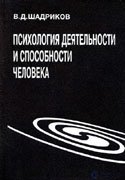 In psychological science, various types of learning have been studied in sufficient detail. Based on the works of L.B. Itelson developed a classification of various types of learning, presented by V.D. Shadrikov (see fig. 6) (Shadrikov VD, 1996; abstract).
In psychological science, various types of learning have been studied in sufficient detail. Based on the works of L.B. Itelson developed a classification of various types of learning, presented by V.D. Shadrikov (see fig. 6) (Shadrikov VD, 1996; abstract).
Все типы научения можно разделить на два вида: ассоциативное и интеллектуальное.
Характерным для ассоциативного научения является образование связей между определенными элементами реальности, поведения, физиологическим процессами или психической деятельностью на основе смежности этих элементов (физической, психической или функциональной).
Со времен Аристотеля до наших дней основной принцип научения - ассоциация по смежности - формулируется сходным образом. Когда два события повторяются с небольшим интервалом (временная смежность), они ассоциируются друг с другом таким образом, что возникновение одного вызывает в памяти другое. Русский физиолог И.П. Павлов (1849-1936) первым занялся исследованием в лабораторных условиях свойств ассоциативного научения. Он обнаружил, что, хотя звук колокольчика первоначально никак не отражался на поведении собаки, однако, после регулярного звонка в момент кормежки, через некоторое время у собаки вырабатывался условный рефлекс: звонок сам по себе начинал вызывать у нее слюноотделение. Павлов измерял степень научения количеством слюны, выделившейся при звонке, не сопровождавшемся кормежкой. Метод выработки условных рефлексов основан на использовании уже существующей связи между специфической формой поведения (слюноотделением) и неким событием (появлением еды), которое вызывает эту форму поведения. При формировании условного рефлекса в эту цепочку включается нейтральное событие (звонок), которое ассоциируется с событием "естественным" (появлением еды) настолько, что выполняет его функцию.
Психологи подробно исследовали ассоциативное научение методом так называемых парных ассоциаций: вербальные единицы (слова или слоги) заучиваются парами; предъявление впоследствии одного члена пары вызывает вспоминание о другом. Этот тип научения имеет место при овладении иностранным языком: незнакомое слово образует пару со своим эквивалентом на родном языке, и эта пара заучивается до тех пор, пока при предъявлении иностранного слова не будет восприниматься тот смысл, который передает слово на родном языке.
При интеллектуальном научении предметом отражения и усвоения являются существенные связи, структуры и отношения объективной действительности.
When learning is expressed in the assimilation of certain stimuli and reactions, it is referred to as reflex; when mastering certain knowledge and certain actions they talk about cognitive learning.
Learning occurs constantly, in a variety of situations, activities. Depending on the way in which learning is achieved, it is divided into two different levels - reflex and cognitive .
At the reflex levelthe process of learning is unconscious, automatic. In this way, the child learns, for example, to distinguish colors, the sound of speech, to walk, to get and move objects. The reflex level of learning is also maintained in an adult, when he inadvertently remembers the distinctive features of objects, acquires new types of movements.
But for a person, a higher, cognitive level is much more characteristic. научения, который строится на усвоении новых знаний и новых способов действия посредством сознательного наблюдения, экспериментирования, осмысления и рассуждения, упражнения и самоконтроля. Именно наличие когнитивного уровня отличает научение человека от научения животных. Однако не только рефлекторный, но и когнитивный уровень научения не превращается в учение, если он управляется какой-либо иной целью, кроме цели усвоить определенные знания и действия.
As a number of psychologists have shown, in some cases spontaneous, unintentional learning can be very effective. So, for example, a child remembers better what is connected with his active activity and is necessary for its implementation than what he learns on purpose. However, in general, the advantage turns out to be undoubtedly on the side of conscious, purposeful doctrine, since only it can provide systematic and deep knowledge.
Сопоставляя сенсорную и моторную модели научения, Л.Б. Ительсон писал:
"Первая (сенсорная модель) выделяет расширение знаний как движущую задачу научения. Вторая (моторная модель) - расширение программ деятельности как ведущую задачу научения.
Сенсорная концепция подчеркивает как условие научения мотивацию деятельности. Моторная - достижение целей деятельности. Из сенсорной концепции следует: чтобы определенные свойства мира были выделены (отражены) психикой учащегося и закреплены в ней, они должны быть значимы для него, т.е. связаны с его потребностями. Из моторной - чтобы программы действий были сформированы и закреплены в психике учащегося, они должны приводить к поставленной цели, т.е. реализовывать его потребности. Первая утверждает: чтобы новые знания усваивались учащимся, он должен "видеть" ("чувствовать") их полезность. Вторая - чтобы новые действия усваивались учащимся, он должен "видеть" ("чувствовать") их успешность.
Из сенсорной концепции вытекает: чтобы происходило научение, необходимо создать у учащегося положительное эмоциональное отношение к поступающей информации. Из моторной вытекает: чтобы происходило научение, необходимо положительное переживание у учащегося при выполнении требуемых действий.
Сенсорная концепция предполагает активную познавательную деятельность учащегося: анализ, синтез, абстрагирование и обобщение поступающих чувственных данных. Моторная - активную практическую деятельность учащегося; поиски и испробование подходящих действий, контроль их результатов и сопоставление с целью.
Нетрудно заметить, что две эти концепции не противоречат одна другой, а просто рассматривают разные стороны научения. В центре сенсорной концепции стоит рассмотрение отражательной, а моторной - регуляторной деятельности психики. Первая подчеркивает информационный, познавательный характер научения, вторая - его деятельный целенаправленный характер" (Ительсон Л.Б., 1970. С. 49-50).
В приведенной выдержке достаточно ярко показана направленность сенсорной и моторной моделей научения и совершенно справедливо подчеркивается, с одной стороны, ограниченность каждой из них, а с другой - их взаимная дополняемость, так как в любом реальном процессе присутствует как сенсорное, так и моторное научение и можно говорить только об их относительном преобладании.
Ассоциативное научение не исчерпывает всех типов научения. Оно характеризует лишь более простые (хотя и многообразные) типы адаптивной модификации поведения.
У животного интеллектуальное научение представлено в простейших формах, у человека оно является основной формой научения и протекает на когнитивном уровне.
In the considered classification is given a fairly complete description of the main types of learning. However, the following observations are valid.
First, it is necessary to clarify the content of the teaching of thinking and define its essence as the mastery of the student operations of analysis and synthesis, aimed at reflecting being "in his relationships and relationships, in his diverse mediations" (Rubinstein S., 1946. P. 340) .
Secondly, it should be noted that with intellectual learning we deal with the formation of connections, but "these are essential necessary connections based on real dependencies, and not random connections based on contiguity in a particular particular situation" (Ibid. S. 341).
All the diversity of human activity can be reduced to three main types - game, teaching, work.
A game is a type of unproductive activity, the motive of which lies not in its results, but in the process itself.
Learning is the activity of a student in mastering new knowledge and mastering ways to acquire knowledge .
Labor is a rational human activity aimed at preserving, modifying, adapting the habitat to meet its needs, and at producing goods and services .
The teaching, which in the sequential change of the main types of activity that occurs during the life of each person, follows the game and precedes the work, is significantly different from the game .
After all, any interaction with the world not only meets the needs of the individual, but also leads to a more complete and accurate reflection of the conditions of activity, which ensures the improvement of the methods of its implementation. Learning is a necessary component of any activity and represents the process of changing its subject, due to its subject content. By this, the doctrine differs from changes in activity caused by the physiological properties of the organism (its maturation, functional state, etc.) (see Khrest. 3.2).
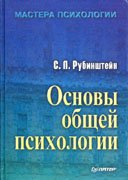 There are various interpretations of the concept of "teaching" (Fig. 10). We give some of them. For example, S.L. Rubinstein so reveals the essence of the doctrine: "The main purpose of the doctrine, in relation to which his entire social organization is equipping, is to prepare for future self-employment; the main means is to master the generalized results of what was created by the previous labor of humanity; mastering the results of past social labor, man prepared for their own work. This process of learning is not spontaneous, not by gravity. Doctrine is a party social in essence the learning process is a two-way process of transferring and mastering knowledge. It is carried out under the guidance of a teacher and is directed towards the development of a student’s creative abilities ”(Rubinstein SL, 1999. P. 495; abstract).
There are various interpretations of the concept of "teaching" (Fig. 10). We give some of them. For example, S.L. Rubinstein so reveals the essence of the doctrine: "The main purpose of the doctrine, in relation to which his entire social organization is equipping, is to prepare for future self-employment; the main means is to master the generalized results of what was created by the previous labor of humanity; mastering the results of past social labor, man prepared for their own work. This process of learning is not spontaneous, not by gravity. Doctrine is a party social in essence the learning process is a two-way process of transferring and mastering knowledge. It is carried out under the guidance of a teacher and is directed towards the development of a student’s creative abilities ”(Rubinstein SL, 1999. P. 495; abstract).
Itelson LB: "This is an activity whose immediate goal is the mastering of certain information, actions, forms of behavior. Such a specific activity of a subject aimed at learning, which has as its goal learning, is called learning" (Itelson LB, 2000 Pp. 205).
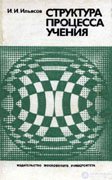 By I.I. Ilyasov systematic analysis of the basic concepts of the doctrine to identify the features of its structural organization and its differences in different concepts at the same time revealed the diversity of the very interpretation of this process, which is primarily due to differences in the general psychological approach and author's interpretations (Ilyasov II, 1986 ; abstract) (see Khrest. 3.3).
By I.I. Ilyasov systematic analysis of the basic concepts of the doctrine to identify the features of its structural organization and its differences in different concepts at the same time revealed the diversity of the very interpretation of this process, which is primarily due to differences in the general psychological approach and author's interpretations (Ilyasov II, 1986 ; abstract) (see Khrest. 3.3).
In domestic psychology, there are several approaches to the analysis of learning problems. One of these theoretical approaches is to consider the doctrine as the students' mastering of knowledge and the formation of their primitive activities in them (N. Menchinskaya, E. N. Kabanova-Meller, D. N. Bogoyavlensky, etc.). It is based on the position according to which students' mastering of knowledge is determined by external circumstances (first of all, by the program and teaching methods) and at the same time is the result of the activity of the student himself (http://www.vygotsky.edu.ru/html/da .php; see the International Department of Cultural and Historical Psychology at the MCPPU).
The central point of the exercise is the assimilation of knowledge, presented in the form of scientific concepts. Such an assimilation does not boil down to a simple copying in the minds of students of the concepts introduced by the teacher. A concept given from outside is formed to the extent that it is the result of a student’s mental activity, mental operations carried out by him (analysis, synthesis, synthesis, abstraction). In the assimilation of concepts, successive stages arise: the movement from incomplete to complete knowledge. This movement, depending on the content of the concepts, may have a different character. In many cases it goes from the particular, the concrete to the general, the abstract. But there is another way of learning: from the undifferentiated general to the particular, to the concrete and through the concrete to the truly abstract. So, when assimilating concepts about representatives of various social classes, a student at the beginning learns only the diametrical opposite of these concepts and their main features. Concepts become meaningful in the future, as schoolchildren acquire relevant specific knowledge.
The assimilation of knowledge is closely related to their application in various educational and practical situations. The application of acquired knowledge depends on the relationship of theoretical and practical, abstract and concrete thinking. They relate differently at different stages of learning, which makes it necessary to use the processes of interiorization and exteriorization (the transition from external actions to solve mental problems to action in the mental plane and back).
In the process of learning, not only knowledge is acquired, but those mental operations with the help of which students acquire and apply knowledge are improved, methods of mental activity are formed, including both mastering the operations and the emergence of motives and needs to use these operations as methods of activity.
The formulation and rather wide use of methods of mental activity leads to the formation in students of certain qualities of the mind: activity and independence, productivity, flexibility, etc.
The doctrine is an evolving process, including the transition from elementary situations where it is carried out on the basis of imitation of a sample with minimal activity of the student himself, to higher levels based on the student’s “self-management” who independently acquires new knowledge or applies previously acquired knowledge to solving new problems .
Another approach to teaching problems is contained in the theory of the phased formation of mental actions and concepts, developed by P.Ya. Halperin (Halperin P.Ya., 1985), N.F. Talyzina (Talyzina NF, 1998) and their employees. In this theory, the doctrine is considered as the assimilation of certain types and ways of cognitive activity, which include a given system of knowledge and further ensure their application within predetermined limits. Knowledge, skills and abilities do not exist in isolation from each other, the quality of knowledge is always determined by the content and characteristics of the activity in which they are included (http://www.voppsy.ru/journals_all/issues/1995/951/951053.htm; cm article Pavlenko VN "Cultural-historical development of mental processes and the theory of the phased formation of mental actions").
The unit acquired in the process of learning cognitive activity is mental action, and the task of controlling the teaching is, first of all, the task of forming mental actions with certain predetermined properties. The possibility of such management gives the knowledge and use of the laws by which the formation of new actions, the identification and consideration of conditions affecting their quality.
Such laws and conditions were the subject of research by the authors of the theory of phased formation. They found that the original form, in which a new mental action with given properties can be built by students, is its external, material (or materialized) form, when the action is carried out with real objects (or their substitutes - models, diagrams, drawings and etc.). The process of mastering an action includes the initial mastering of its external form and subsequent interiorization - a phased transition to fulfillment in the internal, mental plane, during which the action not only turns into a mental one, but also acquires a number of new properties (generality, shorthand, automation, reasonableness, consciousness) . An example of the formation of mental action can serve as the assimilation of the account, which is first carried out by real shifting of objects (material form) or counting rods (materialized form), then - in terms of loud speech and ultimately - completely "in mind" (http: // www .pirao.ru / strukt / lab_gr / l-uchen.html; see the laboratory of psychology of the teachings of the PI RAO).
Comments
To leave a comment
Pedagogical psychology
Terms: Pedagogical psychology